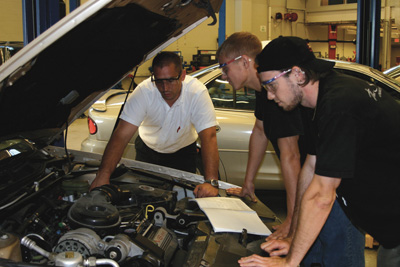 By Ed Sunkin
By Ed Sunkin
Editor
Much can be said about being an automotive technician, collision repair specialist, parts counter person or fleet specialist. For example, some would say they are a businesses’ greatest asset.
Second, the tech staff could be considered a shop owner’s largest business investment — if you take into account the automotive knowledge, training costs and work skills they have developed under their employer.
And finally, as a worker in this industry, you may even be referred to as a shop’s lifeline. For if you are not performing well and cause customers to seek service elsewhere, then the health of your business will be in jeopardy.
Current marketplace trends are beginning to focus attention toward the aftermarket’s crop of automotive technicians and other repairers. For example, new vehicle sales are down as more vehicle owners hold onto their cars and trucks longer due to their own economic worries. 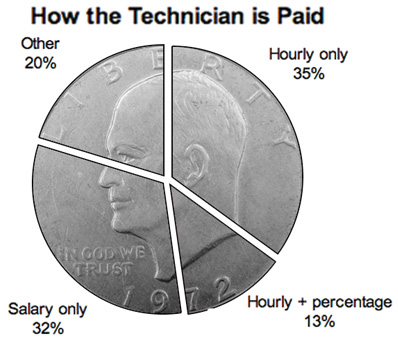
The increase in wear to these vehicles as they age should provide automotive shops and dealerships with more service and repair opportunities, and an improved job outlook for you.
Brotherhood of Technicians
In order to help you better understand the makeup of today’s technicians, Underhood Service magazine conducted a survey through its Babcox Research division that focused only on the technician. This study, updated from the one released in 2001, provides information on a wide variety of topics that concern automotive technicians in the U.S.
The results will equip you with a more complete understanding of individuals working at a variety of independent auto repair facilities. We feel this greater understanding of technicians’ beliefs, motivations and backgrounds is helpful to those like yourself who are considering a career in this field.
Technician Overview
On average, we found that professional technicians working today have been doing this work for about 20.9 years (down from 23 years that was reported in 2001). About 12% of respondents were fairly new to the industry, with only five years or less as a tech, while 18% reported being a tech for more than 30 years.
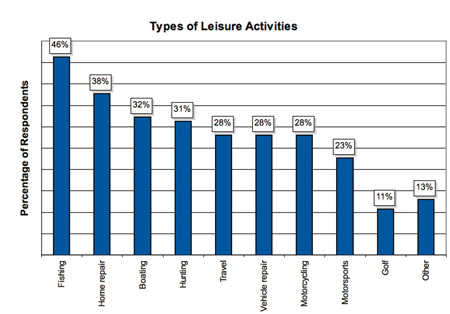 The average number of years a tech has worked at their current shop is about 11 years, which was about the same (10.8 years) as reported in ‘01. Interestingly, 4% of respondents said they have been at their current workplace for more than 30 years, while 47% said they have been at their current shop less than five years.
The average number of years a tech has worked at their current shop is about 11 years, which was about the same (10.8 years) as reported in ‘01. Interestingly, 4% of respondents said they have been at their current workplace for more than 30 years, while 47% said they have been at their current shop less than five years.
When asked “How many shops have you worked at in the last five years?” the results found the average was 1.5 shops.
When asked “How many shops have you worked at in your career?” the average was 4.2 shops.
The average age respondents began working as a technician is about 20.2 years, up from 19.4 years in ‘01. This could be that more technicians are attending post-secondary schools before entering the market.
The average age of the responding technicians is 41.8 (up from 40.7 years in ‘01) with a median age of 43. We also found that 68% of the techs who responded are married (down from 73% in ‘01).
When it comes to ASE certifications, 63% of responding technicians hold certification (up from 39% in ‘01) with close to 50% of those without ASE certifications saying they plan to attain certification in the future. Of those who responded to
the survey, the average ASE-certified tech holds five certifications in their field.
Work & Pay
When we asked how technicians are paid, 35% reported they are paid “hourly only,” up from 29% in ‘01; 32% are paid “salary only,” up from 26% in ‘01; 13% are paid “hourly plus a percent of labor and parts,” up from 10.5% in ‘01; and 20% reported “other.”
Most technicians who reported “other,” which is down from 34% in ‘01, wrote in they are paid a “flat rate” or “flag hours” for service work.
Of the techs who are paid by the hour, the average pay reported was $20 per hour. Of those who responded, 32% make $16 or less an hour, while 21% report making more than $24 an hour.
According to the results, technicians work about 44.4 hours a week, up from 42.3 hours a week noted in the ‘01 survey. Nearly one-third (30%) surveyed said they work weekends and evenings, down a bit from 34% in ‘01.
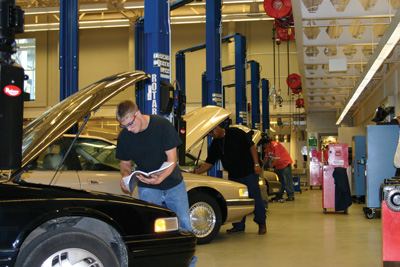 Career In Gear
Career In Gear
So why do some people chose a career in automotive repair? We all know that the ability to diagnose the source of a problem quickly and accurately requires good reasoning ability and a thorough knowledge of automobiles.
However, many technicians consider diagnosing hard-to-find troubles one of their most challenging and satisfying duties.
While many of today’s current techs say they are up to the challenge of increasing technologies from the automakers and continuing their education in order to service the vehicles of tomorrow, many technicians feel that the public doesn’t respect their skills.
Staying Satisfied
Shop and business owners understand that it’s hard work keeping their employees happy. One way to keep techs content is to provide them with various benefits, such as allowing the use of the shop for personal vehicle repairs.
A vast majority of technicians responding to the survey are given the opportunity to work on their own vehicles in the shop.
When asked “Does your shop allow you to work on your own vehicles after hours?” 91% of the responses came back “yes.” Of those provided the opportunity to work on their vehicles at the shop, 96% said they take advantage of that benefit.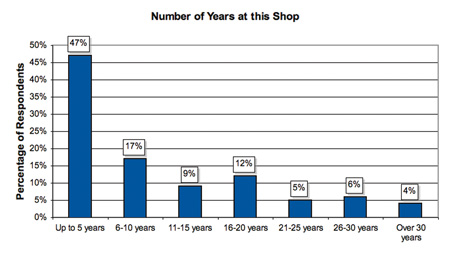
Some additional benefits you may want to consider before hiring on at a shop are as follows:
10 Most-Valued Benefits For Employees
1. Find a shop that will provide you a competitive income to recognize your technical skills and the ability to expedite repairs through diagnostic expertise.
2. See if the shop offers “points” incentives for repairs that are done right the first time and that minimize parts returns.
3. Look for a position that provides paid vacations and sick days. Also, see if the business offers flex work hours.
4. You’ll need health insurance — a precious commodity today.
5. Ask if the shop owner provides fully-paid training that includes transportation to the training facility.
6. Find a working environment that is pleasant and built on family-like relationships where employees have a vested interest in the business.
7. See if the use of the shop for personal vehicle repairs is allowed.
8. Consider getting birthdays and holidays off with pay.
9. Look for a business that offers bonus and retirement plans.
10. Look for a shop that provides uniforms.


